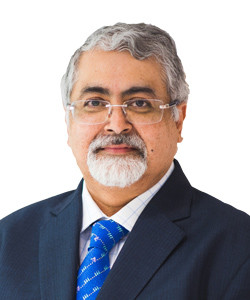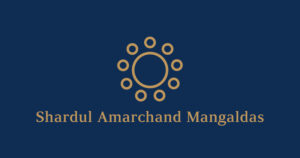In the past half-decade, India has seen a great deal of investment and M&A activity in stressed assets. Large parts of this activity have focused on acquiring distressed companies through the Insolvency and Bankruptcy Code, 2016 (IBC). As of June, more than 4,500 companies have been admitted into the Corporate Insolvency Resolution Process under the IBC, with 396 of them resulting in the approval of resolution plans that preserve the corporate debtor as a going concern. The others are either pending resolution or have entered the liquidation process where, typically, the company’s assets are sold piecemeal.

Executive chairman
Shardul Amarchand Mangaldas & Co
The IBC has been particularly successful in facilitating acquisitions by strategic players in asset-heavy industries. However, it has proven less successful in attracting non-strategic or institutional investors, for three reasons. First, judgments such as Superna Dhawan & Anr v Bharati Defence and Infrastructure Ltd & Ors (2019) have indicated resolution plans that do not envisage any infusion of new equity and/or envisage a “turnaround and sale” model may not be considered compliant with the law.
Second, there has been some regulatory hesitation in allowing financial entities such as asset reconstruction companies (ARCs) to be resolution applicants that propose resolution plans. Third, section 29A prevents existing promoters or management from proposing resolution plans, making the IBC an unattractive route for those financial players that wish to partner with existing management to turn around a company.

Associate
Shardul Amarchand Mangaldas & Co
Even so, the introduction of the IBC has reinvigorated the “pre-insolvency” distressed market, which has seen interest from non-strategic distressed asset investors. This is gaining prominence on account of recent reforms aimed at unlocking investment opportunities in this area.
The Indian government has created the “bad bank” duo of the National Asset Reconstruction Company and India Debt Resolution Company to aggregate and manage non-performing loans of banks for resolution, which will offer an opportunity for investors to invest in security receipts representing approximately INR2 trillion (USD10.5 billion) of debt.
Equally significantly, the Reserve Bank of India (RBI) has released its new Reserve Bank of India (Transfer of Loan Exposures) Directions, 2021, aimed at facilitating the purchase of debt itself.
These directions allow loans, including stressed loans in specified circumstances, to be acquired by any corporate entity, as long as they have regulatory permission from their respective regulator to purchase loans, and the transfer of stressed loans is undertaken as a resolution plan under the Reserve Bank of India (Prudential Framework for Resolution of Stressed Assets) Directions, 2019, resulting in an exit of all lenders from the stressed loan exposure. This is likely to help develop the secondary market for loans by allowing a larger number of players to participate in the market.
Even as these measures start opening up the opportunity for new investors in this area, the authors hope further regulatory measures will be taken to make the investment through these modes more attractive. In the short term, it is important for sectoral regulators to promptly start permitting a number of regulated financial entities, such as alternative investment funds, to purchase distressed debts.
The central government should also consider expanding access to enforcement mechanisms like the Securitisation and Reconstruction of Financial Assets and Enforcement of Security Interest Act, 2002, and the Recovery of Debts and Bankruptcy Act, 1993, to those investors who acquire debt from banks, and waiving of stamp duty on sharing of physical documents for record or due diligence as well as on sales of debt. In the long term, further liberalisation of conditions for the acquisition of distressed debt may also be considered.
The authors hope that market participants will respond effectively to enable active investor participation in this market. Specifically, the task force on the development of secondary market for corporate loans, chaired by TN Manoharan, had suggested that the creation of market infrastructure, such as a sale platform and loan registry, as well as standardisation of documentation and lending practices would be a prerequisite to development of an active secondary market for corporate loans.
Steps ought to be taken to put this in place, as the development of the secondary loan market has been impeded on account of significant issues relating to information asymmetry and challenges with price discovery. An optimal combination of market initiative and regulatory measures will set the stage for unlocking this distressed asset opportunity, and boost the activity of non-strategic players looking to invest in the distressed assets market.
Shardul Shroff is the executive chairman and Shreya Prakash is an associate at Shardul Amarchand Mangaldas & Co

Express Towers, 23rd Floor,
Nariman Point, Mumbai,
Maharashtra 400 021, India
Contact details:
Tel: +91 22 4933 5555
Email: shardul.shroff@amsshardul.com
shreya.prakash@amsshardul.com


























